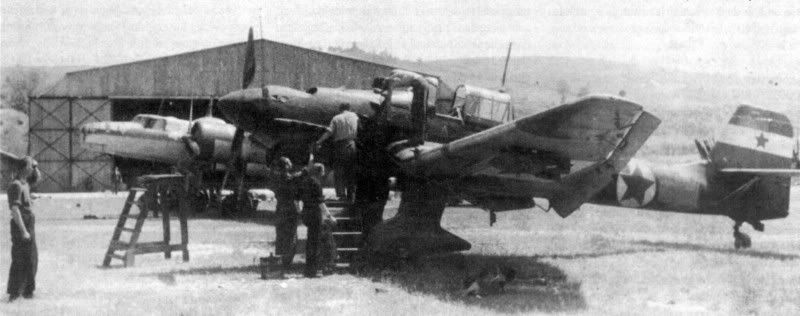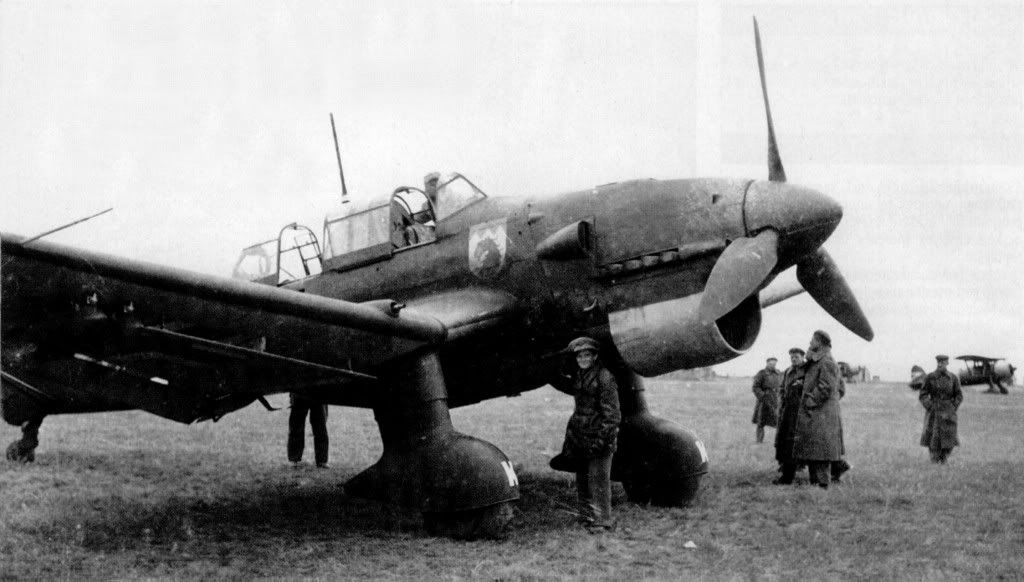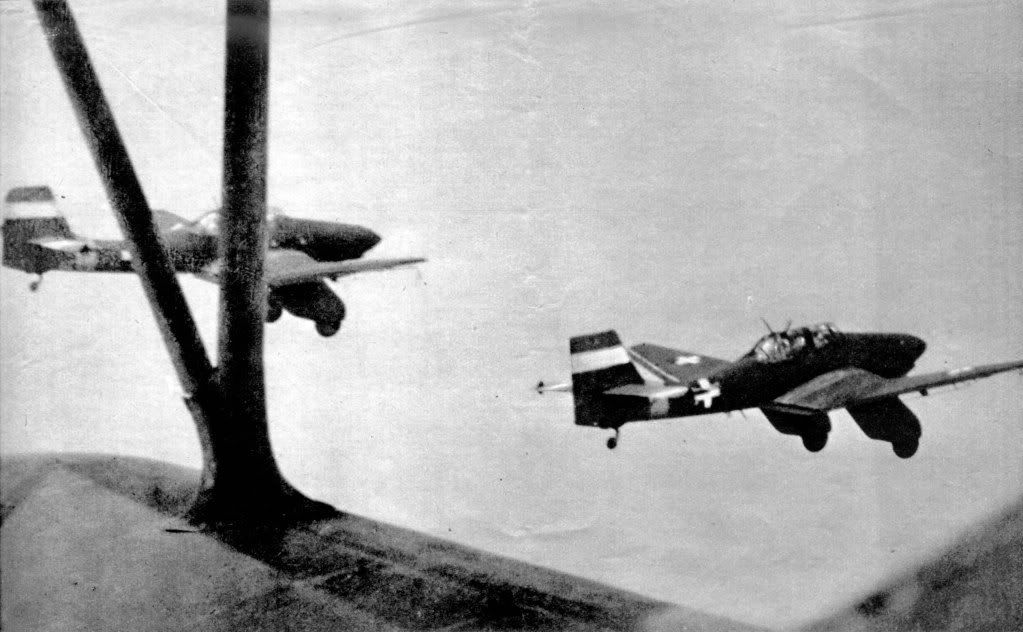And here we have another photo-rarity in our thread, honorable ladies and gentlemen. This time we have our dearly beloved Ju 87 pictured while she was in Yugoslav service. This particular airplane has a pretty intriguing background, so it will be epigrammatically presented here.

Ju 87 B-2, Rajlovac, May 1945
Although outdated by early 1944, many Ju 87’s were still in use as highly solid platforms for night ground attack sorties, even in 1945. Primary purpose of these machines was destruction of enemy supply lines and concentrations, as well as suppression of adversary guerilla forces in the background regions. Amongst these units one particular unit – Nachtschlachtgruppe 10– was used for specific anti-Partisan purposes on the Balkan Peninsula, being situated on the Butmir airfield next to Zagreb. On February 12, 1945 one Ju 87 B-2 Stuka (WNr.0406) from the NSGr. 10 received an order for a repositioning mission with immediate effect. Airplane took off from Butmir and took a direct course toward even today renowned air-base Zalužani near Banja Luka, but the pilot mistook the course that he should have taken, and landed at the freshly cleaned runway of the auxiliary airport at Sanski Most, which was already occupied by the Partisan forces, to be exact by Air Squadron of the 5th Corps of NOVJ.
This unit - previously formed on September 21, 1944 - consisted of 8 aircrafts: a couple of captured Morane-Saulnier MS 406 fighters, as well as of two-engine Caproni Ca 311 bombers, and a pair of Bücker Jungmann training and Benes-Mraz Be 51 sport planes. Together with this freshly captured and highly appreciated Ju 87 Stuka they all participated in a general attack of the Partisan forces on the Banja Luka Fortress, where surrounded belligerent forces were putting up a ferocious resistance. The Germans later on pushed the Partisans out of Banja Luka, forcing the unit to move to other available airfields in western and eastern Bosnia. The actions of this unit, however, provided a huge boost to the morale of the ground forces and proved the values of Partisan air units in the war.
On the other hand, absolutely undisputable and highly attention-grabbing fact is the verity that the very last airborne operation of the Yugoslav forces against the German army was completed by this airplane on May 28, 1945, when this machine, escorted by a pair of Bf 109 Gs, bombed various German and collaborationist troops who had refused to surrender after the officially acknowledged armistice.













